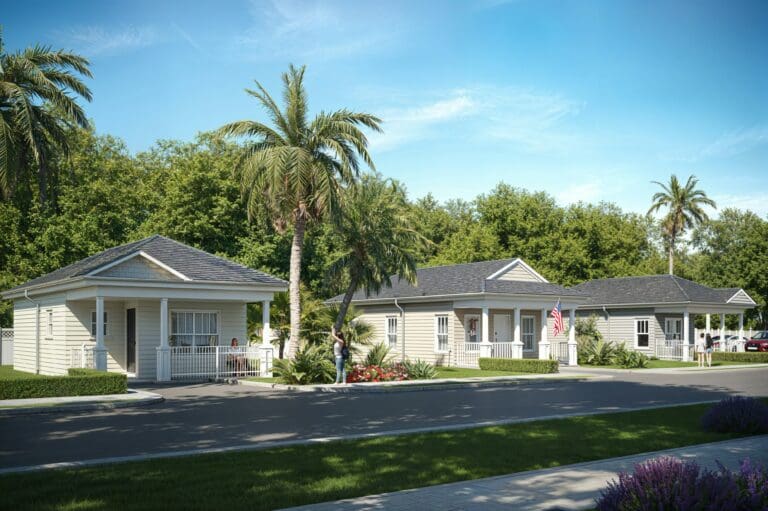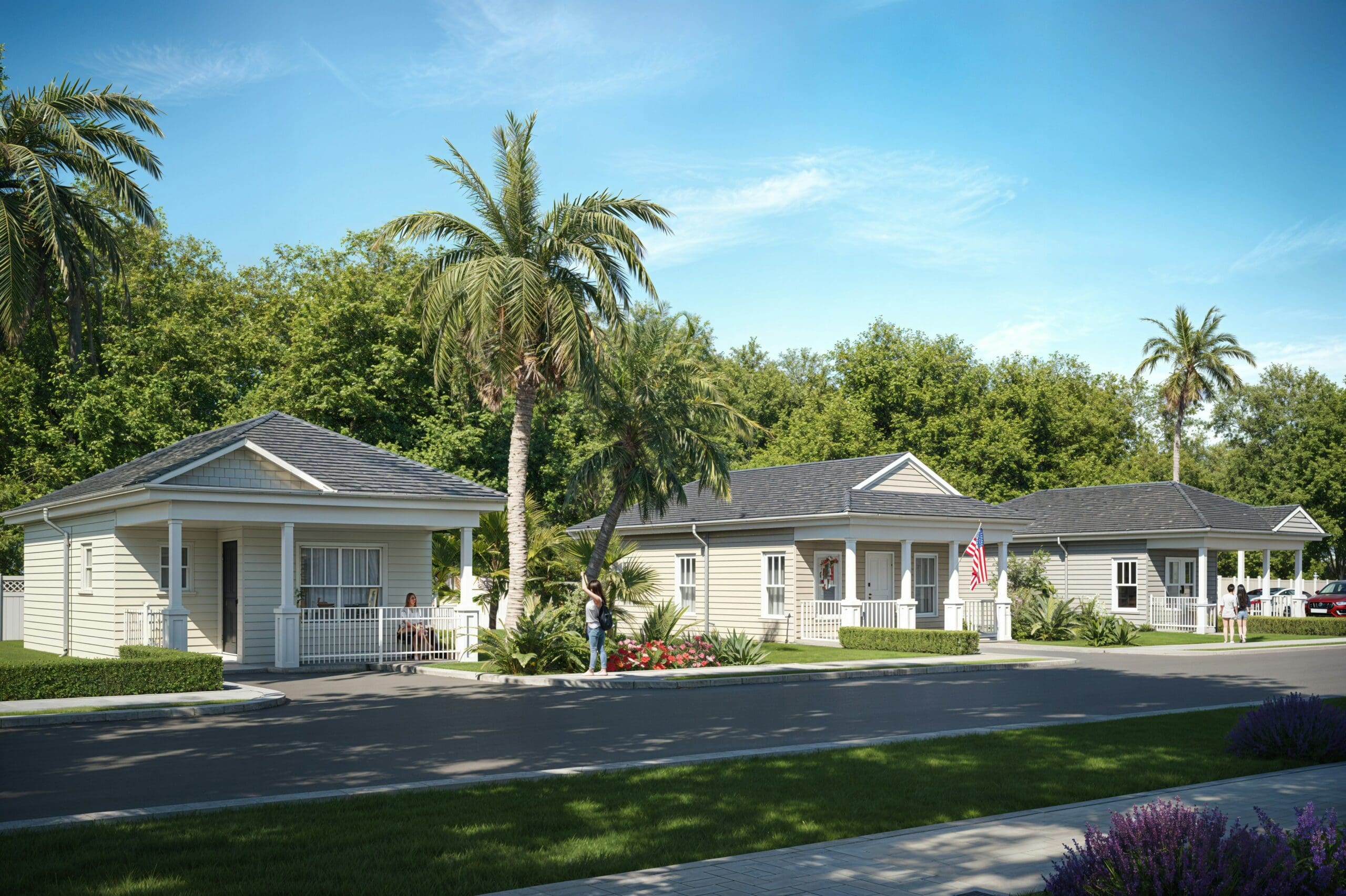When you picture life in a tiny home on Florida’s sunny coast, you probably imagine a cool ocean breeze and year-round comfort. But achieving and maintaining the perfect indoor climate in a compact space—especially in places like Broward and Palm Beach County—requires some thoughtful planning.
At One and Only Tiny Homes, we know that a cozy, energy-efficient atmosphere is just as important as smart design and beautiful finishes. In this blog, we explore the keys to comfortable living in a Florida tiny home, focusing on heating, cooling, and insulation strategies that work for our unique climate.
The Climate Challenge: Tiny Homes in Florida
Florida’s subtropical weather brings high humidity, blazing summers, and mild winters. For tiny homeowners, this means that cooling is often a bigger concern than heating, but year-round comfort involves more than just a good air conditioner. Tiny homes have less air volume, so temperature changes happen quickly—both a challenge and an opportunity for efficient climate control.
The right approach combines insulation, ventilation, and the most suitable HVAC system for your needs. By carefully considering these factors, you can keep your tiny home comfortable and energy bills low, no matter the season.
Insulation: Your First Line of Defense
Before investing in high-tech heating or cooling, start with quality insulation. Tiny homes can be more susceptible to outdoor temperatures due to their size, but with the correct insulation, you create a buffer that keeps cool air in during summer and warm air in during winter.
Spray foam insulation is a popular choice for tiny homes in Florida. It expands to fill every nook and cranny, providing a superior air seal compared to fiberglass batts or rigid foam panels. Insulation can help lower cooling costs by up to 20% according to the U.S. Department of Energy.
Don’t forget about the importance of properly insulated windows and doors. Energy-efficient, double-glazed windows greatly reduce unwanted heat gain, which is especially critical during the hottest months. At One and Only Tiny Homes, we often recommend low-emissivity (Low-E) coatings to reflect infrared light and minimize heat transfer without sacrificing natural sunlight.
Passive Design: Harnessing Nature for Comfort
Passive design refers to building features and orientation that take advantage of the natural environment to regulate temperature. For tiny homes in Florida, the right passive strategies can make a noticeable difference:
- Strategic Window Placement: Positioning windows for cross-ventilation allows breezes to flow through your space, reducing reliance on mechanical cooling.
- Overhangs and Shading: Roof overhangs, awnings, or even well-placed landscaping can shield windows from direct sun, keeping interiors cooler.
- Light-Colored Exteriors: Lighter paint colors reflect sunlight, reducing heat absorption. According to the U.S. Department of Energy, reflective roofing can lower roof surface temperatures by up to 50°F.
These passive elements can be incorporated into your tiny home design from the start, offering year-round benefits with minimal maintenance.
Cooling Solutions: Portable AC Units, Mini-Splits, and More
Florida’s summers demand reliable cooling. Tiny homeowners have several options, each with its own strengths and trade-offs.
Portable Air Conditioners
Portable AC units are budget-friendly and easy to install, making them a popular choice for many tiny home dwellers. They require no permanent installation and can be moved from room to room as needed. However, they tend to be less energy-efficient than other systems, often taking up valuable floor space and requiring a window or vent for exhaust.
These units offer a low upfront cost and are easy to move and install, making them a convenient option for many tiny home dwellers. However, their drawbacks include potential noisiness, lower efficiency (especially in high humidity), and the fact that they occupy valuable living space.
Portable units are best for short-term solutions or as a backup during particularly hot spells.
Ductless Mini-Split Systems
For long-term comfort and efficiency, ductless mini-split systems are a standout choice in the tiny home community. These systems feature an outdoor compressor and one or more indoor air handlers, allowing for zone-based temperature control.
Mini-splits are renowned for their efficiency and quiet operation. Specifically, ENERGY STAR-rated mini-splits use less energy than standard electric resistance heating and traditional window AC units.
Mini-split systems are highly efficient, quiet, and unobtrusive, offering both cooling and heating functions with minimal space requirements. However, they come with a higher upfront cost and require professional installation.
For Florida’s climate and the compact size of most tiny homes, mini-splits offer exceptional value over time.
Window AC Units
Some tiny homeowners opt for window AC units, which are affordable and effective for small spaces. They do, however, require a suitable window and can compromise natural light and aesthetics. Additionally, window units are less energy-efficient than mini-splits, though they remain a step up from most portable models.
Heating in a Warm Climate
While Florida winters are mild, the occasional cold snap can make supplemental heating necessary. Many mini-split systems include a heat pump function, providing efficient heating without extra equipment. For those rare chilly nights, a small electric space heater is usually sufficient—just use it safely and avoid overloading electrical circuits.
Ventilation and Moisture Control
Humidity is a year-round concern in Florida. Proper ventilation prevents mold and keeps indoor air fresh. Exhaust fans in the kitchen and bathroom, along with a dehumidifier, can help control moisture. Some mini-split systems offer a “dry” mode to reduce humidity without overcooling, which is ideal for maintaining comfort and air quality.
Smart Controls and Energy Management
Modern climate control systems often come with smart thermostats or remote controls, allowing you to optimize energy use and maintain consistent comfort. Many tiny homeowners find that programming their systems to run only when needed, or using smartphone apps to monitor conditions, leads to noticeable savings on utility bills.
Custom Solutions for Tiny Homes in Broward & Palm Beach County
Every tiny home is unique, and at One and Only Tiny Homes, we understand that climate control isn’t one-size-fits-all. Our team specializes in designing and building tiny homes and ADUs that thrive in South Florida’s climate, using a blend of the latest technology, thoughtful design, and quality materials.
If you’re ready to explore the possibilities for your own tiny home, connect with us for a free consultation. We’re here to help you achieve year-round comfort, efficiency, and the peace of mind that comes with a well-designed living space—no matter the season.


